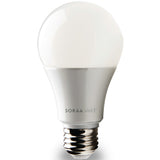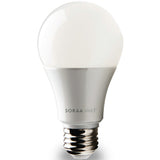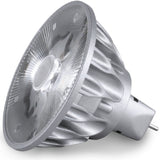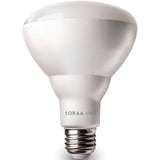Color Rendering Index (CRI): The Significant Metric for Color Critical Lighting Applications
Posted by Dave on for ProLampSales

The ability of the human eye to see the world in color and to perceive the smallest variations in the color of objects and illuminated spaces enriches the visual experience beyond measure.
A major factor in the perception of color is the light source that is illuminating the object or space. The perceived color of an object is the color of the light reflected or transmitted by the object when it is illuminated.
For example, if you purchase a new red sweater in a shop illuminated by typical fluorescent lights and then walk out of the store into a bright blue sky day, the red sweater will have a slightly different perceived color compared to how it appeared inside the shop. The light source changed, the perceived color changed.
The importance of the light source on perceived color is why the lighting industry has developed a metric to help buyers of light bulbs and light fixtures purchase the appropriate lighting products for specific applications.
Color Rendering Index (CRI)
The term color rendering describes how a particular light source that is illuminating an object makes that object appear compared to how it will appear when illuminated by a different light source.
The Color Rendering Index (CRI) is a scale from 0 to 100 percent indicating how accurate a specified light source is at rendering color when compared to a "reference" light source - usually daylight.
The higher the CRI, the better the color rendering ability. Incandescent and halogen light sources have a CRI close to 100. LED, fluorescent and metal halide light sources with a CRI of 85 to 90 are considered good at color rendering. These same light sources with a CRI of 90 or higher are excellent at color rendering.
For example, if the shop where you purchased the red sweater had LED light fixtures producing illumination with a CRI of 95, the difference in the color appearance of the sweater when you walked out of the store into a bright day would have been minor compared to the shop illuminated with fluorescent bulbs with a CRI of 80.

Most light bulb and light fixture spec sheets will include a value for CRI.
Accurate color rendering is not important for all applications. Warehouses, industrial plants, big box stores and even most offices do not require high CRI light sources. However, high end retail, museums, art galleries and stage / studio applications benefit from illuminating the products and spaces so that "accurate" color rendering is achieved. Before any lighting product is purchased for use in these types of applications, CRI should be one of the primary factors considered.
Color Temperature and CRI are Independent Metrics
It is important to note that CRI is independent of color temperature (2700K, 3000K, 4000K, 5000K etc).
A 2700K ("warm") color temperature light source can have a CRI of 95. A 5000K ("daylight") color temperature light source may have a CRI of 75 and another 5000K light source may have a CRI of 90.
The key for the lighting buyer and specifier is targeting the key lighting variables for specific applications. In some spaces, a fine dining restaurant, warm color temperature illumination will be a much higher priority than accurate color rendering. While, an art gallery will want the art illuminated with high CRI light while caring less about the color temperate of the space.
Featured Products (View All)
- 0 Comments
- Posted in Design
0 Comments




